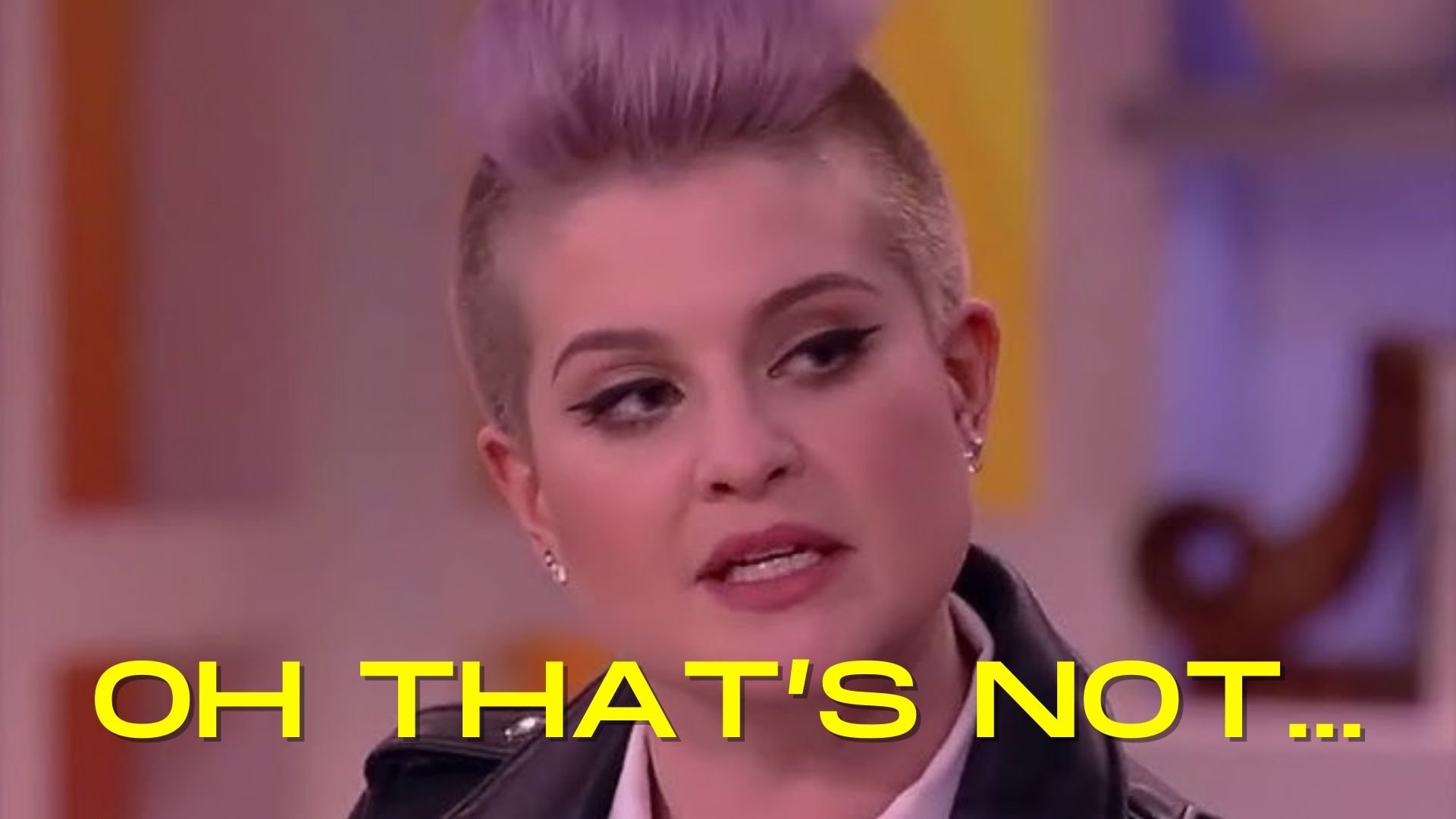Language is a constantly evolving entity, and phrases like "oh that's not" have taken on unique meanings in various contexts. This expression often serves as a reaction to surprising or unexpected information, a way of expressing disbelief or challenging the validity of a statement. Understanding the nuances of such phrases can provide deeper insight into everyday conversations and social interactions.
In this article, we'll delve into the origins and applications of "oh that's not," exploring how it is used in different scenarios. From casual conversations to social media interactions, this phrase has become a staple in modern vernacular. As we analyze its implications, we will also touch on the emotional weight carried by such expressions and how they can shape our dialogue.
As we navigate through the dimensions of "oh that's not," it’s important to consider how context influences meaning. Whether used humorously, sarcastically, or genuinely, this phrase can convey a vast array of sentiments. Our exploration will also include notable examples from pop culture and social interactions, illustrating the versatility of this seemingly simple expression.
What Is the Origin of "Oh That's Not"?
The phrase "oh that's not" has roots in colloquial English, emerging as a quick response to statements that prompt skepticism or surprise. Its usage has grown particularly with the rise of social media platforms, where rapid exchanges of information often lead to instant reactions. But what makes this phrase resonate so well in everyday conversations?
How Is "Oh That's Not" Used in Everyday Conversations?
In everyday conversations, "oh that's not" can be employed in various contexts. Here are a few examples:
- Disbelief: When someone shares surprising news, a listener might respond with, "Oh, that's not true!"
- Challenge: If a claim seems exaggerated, a person might retort, "Oh, that's not how it happened."
- Humor: In a light-hearted exchange, someone might say, "Oh, that's not what I expected at all!"
Can "Oh That's Not" Convey Sarcasm?
Absolutely! The phrase can carry a sarcastic tone, especially if the listener is well aware of the situation being discussed. For instance, if someone claims to have run a marathon without any training, a sarcastic response could be, "Oh, that's not believable!" Such usage highlights the importance of vocal tone and context in conveying the intended meaning.
What Role Does "Oh That's Not" Play in Social Media?
With the growing prevalence of social media, the phrase "oh that's not" has found its way into digital dialogues. Whether in comments, tweets, or memes, it serves as a quick rebuttal to outlandish claims or humorous content. How has social media transformed the way we use this expression?
Is "Oh That's Not" Used Differently Across Platforms?
Indeed! The way "oh that's not" is employed varies across different social media platforms. For example:
- Twitter: Users may respond to a tweet with "oh that's not" to express disbelief in a succinct manner.
- Instagram: In comments on humorous or exaggerated posts, this phrase can highlight the absurdity of the content.
- Facebook: Friends might use it in a more personal context, reacting to shared stories or news.
How Do Influencers Use "Oh That's Not"?
Influencers often utilize the phrase to connect with their audience, employing it in relatable scenarios. For example, a lifestyle influencer might share a story where they faced an unexpected challenge, followed by a humorous "oh that's not!" This strategy not only engages viewers but also fosters a sense of community among followers who can relate to such experiences.
What Are the Emotional Implications of "Oh That's Not"?
The phrase "oh that's not" carries emotional weight, as it often signifies disbelief, humor, or challenge. Understanding these implications can enhance our communication skills. What emotions can this phrase evoke?
Can "Oh That's Not" Be Empowering?
Yes, it can! When used in the right context, "oh that's not" can empower individuals to assert themselves or challenge misleading information. For instance, if someone is presented with false claims, responding with "oh that's not accurate" can help assert the truth and encourage critical thinking.
How Does "Oh That's Not" Foster Connection?
Using "oh that's not" in a conversation can foster connection by creating a shared understanding of disbelief or humor between individuals. When people laugh at a shared absurdity, they bond over the experience, leading to deeper conversations and relationships.
Is There a Risk of Misinterpretation with "Oh That's Not"?
While the phrase is versatile, there is a risk of misinterpretation. Depending on the tone and context, it can come off as dismissive or sarcastic rather than light-hearted or engaging. How can one avoid misinterpretation when using this phrase?
What Strategies Can Help Communicate Effectively?
To ensure that "oh that's not" is interpreted correctly, consider the following strategies:
- Context Matters: Always be aware of the context in which you use the phrase.
- Tone of Voice: Your vocal tone can significantly affect how the phrase is perceived.
- Follow-Up: Adding a clarifying statement can help mitigate misunderstandings.
How to Use "Oh That's Not" in a Positive Way?
To use "oh that's not" positively, aim to incorporate it in a way that invites laughter or further discussion rather than shutting down the conversation. For instance, responding to a friend's exaggerated tale with a playful "oh that's not how it went down!" can lead to a fun exchange.
Conclusion: Embracing the Nuances of "Oh That's Not"
In conclusion, the phrase "oh that's not" serves as a powerful tool in everyday communication. Its versatility allows it to express disbelief, humor, and challenge, making it an essential part of modern vernacular. By understanding its nuances and implications, we can enhance our social interactions and foster deeper connections with others.
As language continues to evolve, phrases like "oh that's not" will undoubtedly adapt and find new meanings. Embrace this phrase in your conversations, but remember to be mindful of context and tone to ensure your message is received as intended.

![Oh, thats a [blank] Blank Template Imgflip](https://i2.wp.com/i.imgflip.com/7k6b0b.png)

